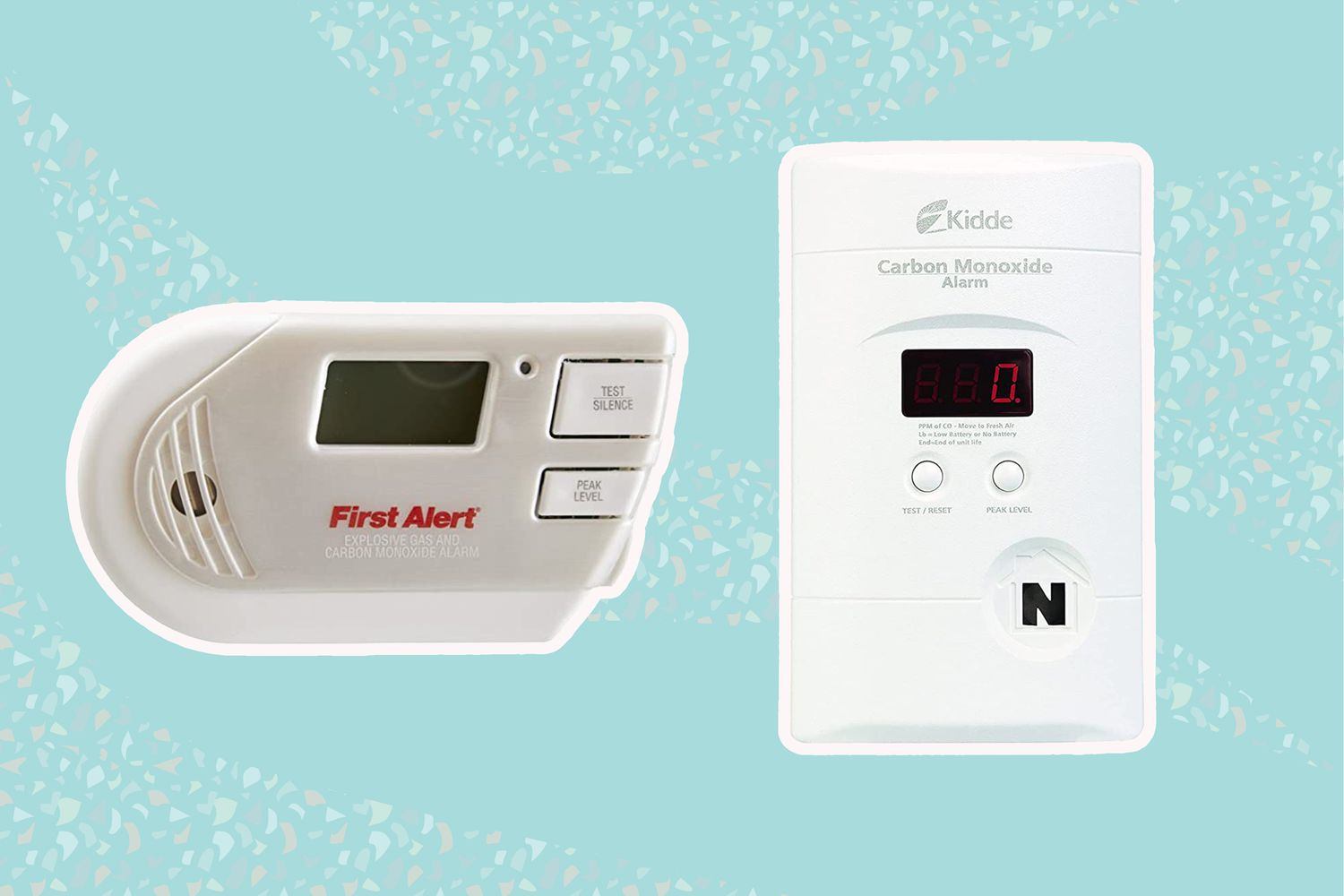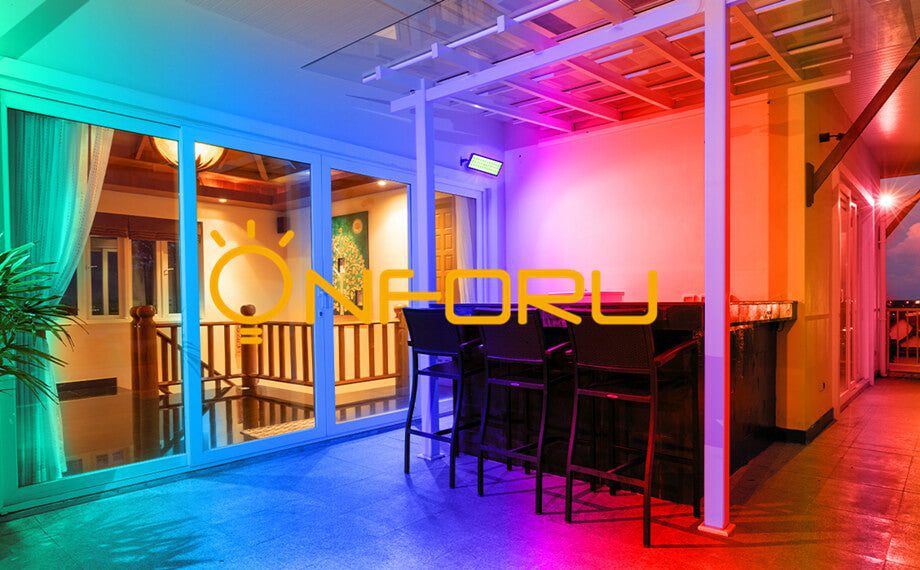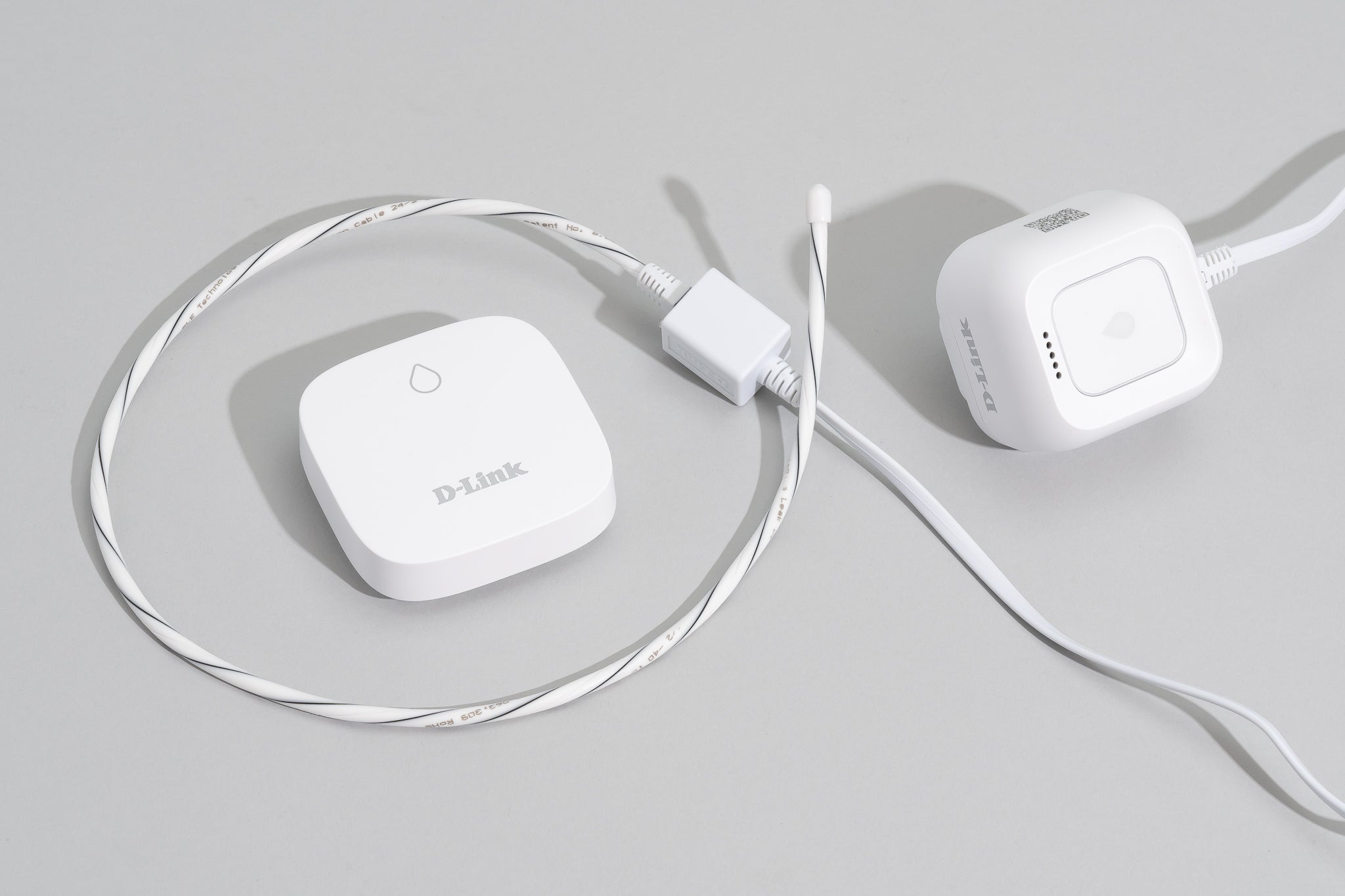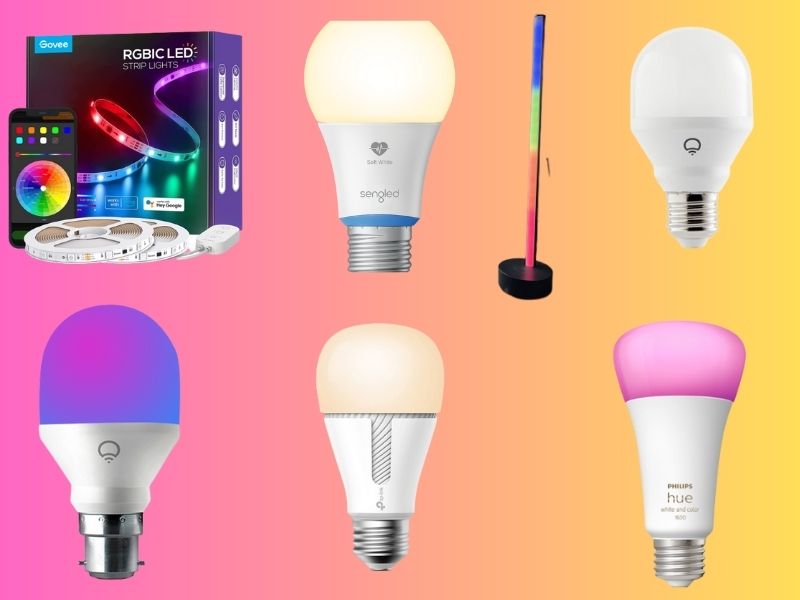Energy-Saving Lighting Solutions : Illuminate Your Space Efficiently
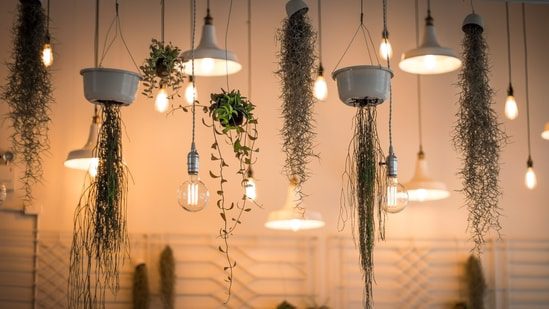
Energy-saving lighting solutions are efficient alternatives to traditional lighting, reducing energy consumption and costs. These solutions encompass LED lights, smart lighting systems, and motion sensors, providing sustainable and eco-friendly options for both residential and commercial settings.
Ultimately, energy-saving lighting solutions offer significant benefits such as longer lifespan, lower energy bills, and reduced environmental impact. By adopting these innovative technologies, individuals and businesses can contribute to energy conservation and create a brighter and more sustainable future.

Credit: www.architecturaldigest.com
Reducing Energy Consumption: A Key Aspect Of Energy-Saving Lighting Solutions
Reducing energy consumption is a crucial aspect of energy-saving lighting solutions. By implementing these solutions, businesses and homeowners can effectively lower their energy usage, leading to significant cost savings and a more sustainable environment.
Looking for ways to reduce your energy consumption and lower your electricity bills? Energy-saving lighting solutions provide an excellent way to achieve exactly that. By adopting these innovative technologies, you not only save money but also contribute to a more sustainable future.
We will explore two key aspects of energy-saving lighting solutions: LED bulbs and smart lighting systems.
Led Bulbs: Efficient And Long-Lasting
LED bulbs have revolutionized the lighting industry with their exceptional energy efficiency and long lifespan. Here’s why LED bulbs are a popular choice for those looking to reduce energy consumption:
- Energy efficiency: LED bulbs use significantly less electrical energy compared to traditional incandescent or fluorescent bulbs. They are designed to convert more energy into light rather than heat, making them highly efficient.
- Long lifespan: LED bulbs have an impressive average lifespan of around 50,000 hours. This longevity not only reduces the frequency of bulb replacements but also minimizes waste.
- Cost savings: Although LED bulbs may have a slightly higher upfront cost, their energy efficiency and long lifespan result in substantial savings on electricity bills over time.
- Versatility: LED bulbs are available in various shapes, sizes, and colors, offering versatility in lighting design for both residential and commercial spaces.
Smart Lighting Systems: Enhancing Efficiency And Control
When it comes to energy-saving lighting solutions, smart lighting systems provide enhanced efficiency and control over lighting consumption. Let’s explore the benefits of utilizing smart lighting technologies:
- Energy optimization: Smart lighting systems utilize advanced technologies such as motion sensors and timers to automatically adjust lighting levels based on occupancy and natural light availability. This ensures that lights are only on when necessary, reducing unnecessary energy consumption.
- Remote control and scheduling: With smart lighting technology, you can control your lights remotely through mobile apps or voice commands. You can also schedule lighting activities, allowing you to turn lights on or off at specific times, further reducing energy wastage.
- Personalized lighting preferences: Smart lighting systems offer the flexibility to adjust brightness, color temperature, and mood lighting according to personal preferences. This not only enhances comfort and ambiance but also promotes energy efficiency by enabling users to customize lighting based on specific needs.
- Integration with other smart devices: Smart lighting systems can integrate with other smart devices, such as thermostats and sensors, creating a cohesive ecosystem that optimizes energy consumption throughout your home or office.
Reducing energy consumption is a crucial aspect of energy-saving lighting solutions, and both LED bulbs and smart lighting systems play vital roles in achieving this goal. By upgrading to LED bulbs and embracing smart lighting technologies, you can significantly reduce your energy usage, lower your carbon footprint, and enjoy long-term cost savings.
Embrace these innovations and make a positive impact on both your finances and the environment.
Cost Savings: The Financial Advantages Of Energy-Saving Lighting Solutions
Discover the financial advantages of energy-saving lighting solutions and save on costs. These innovative solutions offer efficient and long-lasting lighting options that reduce energy consumption and lower expenses.
Switching to energy-saving lighting solutions not only benefits the environment by reducing energy consumption but also offers significant cost savings for both residential and commercial settings. By implementing these cost-effective lighting options, individuals and businesses can experience substantial reductions in electricity bills and maintenance costs.
Let’s delve into the financial advantages of energy-saving lighting solutions in more detail:
Lowering Electricity Bills
Reducing the amount of energy consumed by lighting systems can lead to tangible savings on electricity bills. Energy-saving lighting solutions offer the following financial advantages:
- Reduced energy consumption: LED lights are known for their exceptional energy efficiency. They consume significantly less electricity compared to traditional incandescent or fluorescent lighting options. By making the switch to LED bulbs, individuals and businesses can enjoy lower energy bills while maintaining optimal illumination levels.
- Longer lifespan: Energy-saving lighting solutions, such as LEDs, have a longer operational lifespan when compared to traditional bulbs. LED lights can last up to 25 times longer, minimizing the frequency of bulb replacements. This longevity translates into reduced energy and maintenance costs, making LEDs a cost-effective choice in the long run.
- Dimming capabilities: Many energy-saving lighting solutions come with dimming capabilities, allowing users to adjust the brightness according to their needs. By dimming the lights when less illumination is required, individuals and businesses can further reduce their electricity bills. Dimming not only saves energy but also extends the lifespan of the bulbs, resulting in additional cost savings in the form of reduced maintenance expenses.
Reducing Maintenance Costs
In addition to lowering electricity bills, energy-saving lighting solutions offer substantial advantages when it comes to reducing maintenance costs. Consider the following:
- Decreased bulb replacement frequency: As mentioned earlier, energy-saving lighting solutions tend to have a longer lifespan compared to traditional bulbs. By opting for these options, individuals and businesses can significantly reduce the frequency of bulb replacements. This translates into lower maintenance expenses, as fewer replacements are required, saving both time and money in the long term.
- Reduced labor costs: Traditional lighting systems often require frequent maintenance, including replacing bulbs, ballasts, and other components. By embracing energy-saving lighting solutions, individuals and businesses can minimize the need for maintenance visits from technicians, reducing associated labor costs. The long operational lifespan of these lighting options means less time and effort are spent on regular upkeep, resulting in additional financial savings.
By investing in energy-saving lighting solutions, individuals and businesses can enjoy the financial advantages of reduced electricity bills and maintenance costs. Not only do these options provide significant cost savings, but they also contribute to a greener and more sustainable future.
Make the switch to energy-saving lighting today and join the movement toward a brighter, more efficient world.
Residential Spaces: Efficient Lighting Solutions For Homeowners
Discover energy-saving lighting solutions for homeowners with our efficient lighting options for residential spaces. Illuminate your home while reducing energy consumption and lowering your utility bills. Upgrade your lighting to a more sustainable and cost-effective solution.
Smart Led Bulbs: Illuminating Homes Smartly
Want to light up your home smartly? Look no further than smart LED bulbs. These innovative lighting solutions are not only energy efficient but also allow you to control and customize your lighting experience. Here’s why smart LED bulbs are an excellent choice for homeowners:
- Energy-efficient: Smart LED bulbs consume significantly less energy compared to traditional incandescent or CFL bulbs. By switching to smart LED bulbs, you can reduce your energy consumption and lower your electricity bills.
- Adjustable brightness: With smart LED bulbs, you have the flexibility to adjust the brightness according to your needs. Whether you want bright and vibrant lighting for reading or a cozy ambiance for relaxation, you can easily control the intensity of these bulbs.
- Color-changing capabilities: Get creative with your home lighting! Smart LED bulbs offer color-changing capabilities, allowing you to set the mood by choosing from a wide range of colors. Whether it’s a party atmosphere or a tranquil setting, these bulbs can create the perfect ambiance for any occasion.
- Remote control and scheduling: Never worry about forgetting to turn off the lights again. Smart LED bulbs can be controlled remotely through smartphone apps or integrated smart home systems. Additionally, you can schedule the bulbs to turn on and off at specific times, adding a layer of convenience and energy efficiency to your daily routine.
Motion Sensor Lighting: Saving Energy In Unused Areas
Tired of wasting energy on lights in unused areas? Motion sensor lighting is the solution you’ve been searching for. These intelligent lighting systems detect motion and automatically turn on and off, providing illumination only when needed. Here’s how motion sensor lighting can save energy in residential spaces:
- Energy savings: Motion sensor lighting ensures that lights are only activated when there is movement in the area. This eliminates the need for manual control or the possibility of lights being left on in unoccupied rooms, leading to significant energy savings.
- Enhanced safety: Motion sensor lighting increases the safety of your home by instantly illuminating areas when motion is detected. Whether it’s a dark hallway or an outdoor pathway, these lights provide visibility and deter potential intruders.
- Convenience: With motion sensor lighting, you no longer have to fumble for light switches in the dark. The lights automatically turn on as soon as you enter a room or approach an area, providing a hassle-free lighting experience.
- Extended bulb lifespan: By reducing the amount of time lights are switched on, motion sensor lighting helps to prolong the lifespan of bulbs. This means fewer bulb replacements and less waste.
Make your residential spaces more energy efficient and convenient with smart LED bulbs and motion sensor lighting. Embrace these efficient lighting solutions to reduce energy consumption, save costs, and enhance the overall ambiance of your home.
Commercial Spaces: Enhancing Energy Efficiency In Offices And Buildings
Enhance energy efficiency in commercial spaces with energy-saving lighting solutions. These solutions optimize energy consumption and reduce costs, resulting in a greener and more sustainable workspace.
Energy efficiency is a top priority for commercial spaces, especially in offices and buildings where lighting accounts for a significant portion of overall energy consumption. By implementing energy-saving lighting solutions, businesses can not only reduce their environmental impact but also enjoy substantial cost savings in the long run.
We will explore two effective strategies to enhance energy efficiency in commercial spaces: daylight harvesting and occupancy sensors.
Daylight Harvesting: Utilizing Natural Light
- Harnessing natural light is a simple yet effective way to reduce energy consumption in offices and buildings. Here’s how it works:
- Install windows, skylights, and light tubes strategically to maximize the ingress of natural light.
- Use light-colored walls and ceilings to enhance light reflection and distribution throughout the space.
- Opt for blinds or shades that allow for easy control of natural light, ensuring optimal brightness without causing glare.
- Consider using daylight sensors that automatically adjust artificial lighting in response to the amount of natural light available.
- Benefits of daylight harvesting include:
- Significant energy savings by reducing the need for artificial lighting during daylight hours.
- Improvement in employee well-being and productivity due to the positive influence of natural light.
- Enhanced aesthetics and a more pleasant work environment.
Occupancy Sensors: Maximizing Energy Savings In Offices
- Occupancy sensors are an excellent solution to minimize energy waste by ensuring that lights are only turned on when needed. Here are the key features and advantages of using occupancy sensors:
- Install sensors in offices, meeting rooms, restrooms, and other areas where lighting is frequently left switched on unnecessarily.
- Choose sensors with motion and heat detection capabilities for accurate occupancy monitoring.
- Configure sensors to automatically turn off lights after a certain period of inactivity.
- Integrate sensors with smart lighting systems for centralized control and scheduling options.
- Benefits of occupancy sensors include:
- Significant energy savings by reducing the duration of artificial lighting in unoccupied areas.
- Elimination of the need for manual light switches, reducing the likelihood of lights being left on accidentally.
- Enhanced convenience and ease of use for occupants.
By implementing daylight harvesting techniques and utilizing occupancy sensors, commercial spaces can enhance energy efficiency in their offices and buildings. These strategies not only reduce energy consumption but also contribute to a more sustainable and cost-effective work environment.
Outdoor Spaces: Illuminating Sidewalks, Parks, And Streets Efficiently
Discover energy-saving lighting solutions that effectively illuminate sidewalks, parks, and streets, enhancing outdoor spaces with efficient illumination. Maximize energy efficiency without compromising on quality and brightness.
Solar-Powered Lighting: Harnessing Renewable Energy
Imagine sidewalks, parks, and streets magically lighting up at night with eco-friendly lights that harness the power of the sun. Solar-powered lighting is a game-changer in outdoor spaces, offering an energy-efficient and sustainable solution. Here’s why solar-powered lighting is worth considering:
- Solar panels capture sunlight during the day, converting it into electricity. This stored energy is then used to power outdoor lights, eliminating the need for traditional power sources.
- As solar-powered lights operate independently from the electrical grid, they can be installed in remote areas where access to electricity is limited or non-existent.
- With no electric wiring required, installation is hassle-free and cost-effective. This makes solar-powered lighting an ideal choice for illuminating sidewalks, parks, and streets.
- Solar-powered lights are designed with built-in sensors that automatically turn them on at dusk and off at dawn. This automated feature ensures efficient energy usage by only lighting up when needed.
- Good-quality solar-powered lights often have long-lasting batteries that can provide consistent illumination throughout the night, even in areas with limited sunlight.
Timers And Dimmers: Adjusting Lighting Intensity As Needed
In our quest for energy-saving lighting solutions, timers and dimmers play a significant role in preserving energy resources. By adjusting lighting intensity as needed, outdoor spaces can be efficiently illuminated. Here’s how timers and dimmers contribute to energy efficiency:
- Timers can be programmed to turn outdoor lights on and off at specific times, allowing for precise control over the lighting schedule. This eliminates the need for lights to be unnecessarily left on during daylight hours or when not in use.
- Dimmers give the flexibility to adjust the brightness of outdoor lights according to the desired level of illumination. This helps to conserve energy by avoiding the use of full lighting intensity when a lower setting suffices.
- Using timers and dimmers in conjunction with sensor technology ensures lights only operate when required, reducing energy consumption and extending the lifespan of light fixtures.
- In addition to energy savings, the use of timers and dimmers can result in cost savings by reducing electricity bills associated with outdoor lighting.
By harnessing renewable energy through solar-powered lighting and utilizing timers and dimmers for adjusting lighting intensity, outdoor spaces can be efficiently and environmentally illuminated. These energy-saving lighting solutions pave the way towards a more sustainable and cost-effective future.
Light Placement And Fixture Selection: Maximizing Illumination While Minimizing Energy Usage
Discover how to optimize your lighting setup with strategic placement and fixture selection. Our energy-saving lighting solutions provide maximum illumination while minimizing energy usage, helping you save both money and the environment. Experience the benefits of efficient lighting today!
Task Lighting: Focusing On Specific Areas
When it comes to energy-saving lighting solutions, task lighting plays a crucial role in enhancing productivity and minimizing energy usage. By strategically placing lights in specific areas, you can effectively illuminate workspaces while saving on energy costs. Here are some key considerations for task lighting:
- Use directional lights: Positioning lights that can be directed towards specific areas, such as desks or countertops, allows for optimal illumination only where it’s needed.
- Opt for LED bulbs: LED bulbs are not only energy-efficient but also have a longer lifespan compared to traditional incandescent and fluorescent bulbs.
- Install dimmers: Dimmable task lights allow you to adjust the brightness based on the specific task at hand. This feature saves energy by reducing the light output when full brightness is unnecessary.
Indirect Lighting: Creating Ambient Illumination
To create a comfortable and inviting atmosphere while minimizing energy consumption, indirect lighting serves as an excellent choice. By bouncing light off walls, ceilings, or other surfaces, you can achieve ambient illumination without the need for excessive fixtures. Consider the following tips for incorporating indirect lighting:
- Wall-washing: Placing lights at an angle to wash light over an entire wall creates a soft and diffused glow, enhancing the overall ambiance of a room.
- Cove lighting: Installing lights in the coves of ceilings or walls delivers indirect light that bounces off the surface, creating a warm and inviting atmosphere.
- Using light-colored surfaces: Opt for light-colored walls, ceilings, and furnishings as they reflect more light, maximizing the effect of indirect lighting.
Remember, by carefully selecting the placement of lights and fixtures, you can maximize illumination while minimizing energy usage. Don’t forget to utilize task lighting for specific areas and consider implementing indirect lighting for ambient illumination. With these energy-saving lighting solutions, you can create an efficient and eco-friendly lighting system for your space.
Color Temperature And Kelvin Scale: Choosing The Right Lighting For Different Spaces
Explore the science of color temperature and the Kelvin scale to find the perfect energy-saving lighting solutions for any space. From warm to cool tones, discover how different lighting options enhance ambiance and save electricity.
Color temperature is an important factor to consider when selecting lighting for different spaces. It refers to the appearance of light emitted by a bulb, ranging from warm (yellowish) to cool (bluish) tones. Understanding the implications of cool white and warm white lighting can help you create the desired ambiance and functionality in your home or office.
Let’s dive into the differences between cool white and warm white and how to choose the right lighting for different spaces.
Cool White Vs Warm White: Understanding The Implications
When it comes to lighting, the color temperature can have a significant impact on the mood and atmosphere of a room. Here’s what you need to know about cool white and warm white lighting:
**Cool White Lighting**
- Cool white lighting has a higher color temperature, typically between 5000K and 6500K on the Kelvin scale.
- The higher temperature gives off a bright, crisp, and bluish-white light, similar to daylight.
- It enhances concentration and is ideal for task-oriented spaces such as offices, kitchens, and workshops.
- Cool white lighting can make a small room appear more spacious and creates a modern and contemporary feel.
- It can be too harsh for certain settings like bedrooms or living rooms where a relaxing and cozy ambiance is desired.
**Warm White Lighting**
- Warm white lighting has a lower color temperature, generally ranging from 2700K to 3500K on the Kelvin scale.
- The lower temperature emits a soft, yellowish-white light, resembling the glow of a traditional incandescent bulb.
- It creates a cozy, welcoming, and intimate atmosphere, making it suitable for living rooms, bedrooms, and dining areas.
- Warm white lighting helps promote relaxation, making it perfect for spaces where you want to unwind and destress.
- It can add a touch of warmth and elegance to any room and complements earthy and warm color schemes.
Understanding the implications of color temperature and the Kelvin scale can help you choose the right lighting for different spaces. Consider the mood, functionality, and ambiance you want to create when selecting between cool white and warm white lighting. Remember that each has its own distinct characteristics and can greatly impact the overall look and feel of a room.
So, choose wisely and let your lighting choices illuminate your spaces in the most optimal way possible.
Lighting Controls: Optimizing Energy Usage With Automated Systems
Discover energy-saving lighting solutions with automated lighting controls that optimize energy usage. By incorporating automated systems, businesses can effectively reduce energy consumption, making their lighting systems more efficient and sustainable.
Managing and optimizing energy usage is vital for both homeowners and businesses alike. With the escalating concern about environmental conservation and the rising costs of electricity, incorporating energy-saving lighting solutions is a practical way to contribute to a greener planet while saving on utility bills.
Lighting controls are automated systems that allow you to customize and manage your lighting preferences, optimizing energy consumption efficiently. Two essential lighting control systems that can make a significant impact on energy usage are dimmers and timers, as well as integrated systems.
Dimmers And Timers: Regulating Lighting Intensity And Duration
- Dimmers:
- Adjust lighting intensity according to specific needs, reducing energy consumption and extending the lifespan of bulbs.
- Create desired ambiance by setting the perfect level of brightness.
- Promote energy savings by preventing excessive lighting.
- Timers:
- Automatically control the duration of lighting, ensuring lights are only on when needed.
- Enhance security by scheduling lights to turn on and off when you’re away, giving the illusion of occupancy.
- Significantly reduce energy wastage by eliminating the possibility of lights being left on unnecessarily.
These lighting control options offer convenience, cost savings, and increased energy efficiency, making them an excellent addition to any lighting setup. However, integrating them into a comprehensive lighting control system takes energy optimization to a new level.
Integrated Systems: Customizing Lighting Preferences
Integrated lighting systems combine various elements such as sensors, timers, dimmers, and even smart technology to create a highly customizable lighting experience. These systems offer numerous benefits:
- Occupancy sensors:
- Detect occupancy in a room and automatically turn lights on or off accordingly.
- Avoid unnecessary energy consumption in unoccupied areas.
- Daylight harvesting sensors:
- Adjust lighting levels based on the amount of natural light available.
- Maintain optimal brightness levels while minimizing electricity usage.
- Centralized control:
- Administer multiple lighting fixtures and settings from a single centralized hub.
- Easily customize lighting preferences according to specific needs and scenarios.
- Smart technology integration:
- Utilize smart devices for seamless control of lighting, whether at home or remotely.
- Enable advanced features such as voice-activated controls and energy monitoring.
By incorporating integrated lighting systems, it is possible to achieve further energy efficiency gains, reduce wastage, and enhance overall user experience. The customization options and convenience offered by these systems are hard to match, making them a smart choice for those looking to optimize their energy consumption effectively.
Remember, lighting controls are not only about reducing energy costs but also provide a environmentally-friendly solution for a sustainable future. By exploring and implementing these energy-saving lighting solutions, you can take a step towards a greener and more efficient way of living or running a business.
Exploring Available Rebate Programs For Energy Efficiency Upgrades
Upgrade your lighting solutions to energy-saving options and explore available rebate programs for added efficiency. Save on energy costs while reducing your carbon footprint with these environmentally friendly alternatives.
Energy-Saving Lighting Solutions
If you’re looking to save energy and reduce your electricity bills, upgrading your lighting to more energy-efficient options is a smart choice. Not only do modern lighting solutions consume less energy, but they also provide better lighting quality and last longer, translating into long-term savings.
We will explore the available rebate programs that can help offset the initial costs of energy efficiency upgrades.
Local Utility Company Rebates
Many local utility companies offer rebate programs to incentivize customers to switch to energy-saving lighting solutions. These programs aim to promote energy efficiency and conservation by providing financial incentives. Here are some key points regarding local utility company rebates:
- Rebate eligibility: Different programs may have specific eligibility criteria, such as the type of lighting upgrades, the size of the project, or the efficiency of the new fixtures. It’s advisable to check with your utility company to ensure your upgrades qualify for the rebate program.
- Potential savings: Rebate amounts vary depending on the utility company and the scope of the project. However, they can range from a few dollars per fixture to significant discounts on the overall cost. These savings can make a substantial difference when it comes to managing project budgets.
- Application process: Typically, utility company rebate programs require customers to submit an application along with relevant documentation, such as proof of purchase and installation. The process might involve filling out forms, submitting invoices, and providing details about the lighting upgrades.
- Timeframe for rebates: It’s essential to be aware of the timeframe associated with rebate programs. Some utility companies may have specific deadlines for submitting applications, and others may require that the upgrades be completed within a certain timeframe.
Government Incentives And Tax Credits
Besides local utility company rebates, various government incentives and tax credits are available to individuals and businesses that invest in energy-saving lighting solutions. These programs aim to encourage sustainable practices and reduce carbon emissions. Here’s what you need to know:
- Federal programs: The federal government, through agencies like the Department of Energy, offers a range of incentives and tax credits for energy-efficient improvements, including lighting upgrades. These programs often promote specific types of energy-saving technologies and provide guidance on eligibility and application procedures.
- State and local programs: In addition to federal incentives, many states and local governments have their own programs to encourage energy efficiency. These programs may include additional rebates, grants, or tax incentives. It’s worth visiting your state’s energy office website or contacting local authorities to find out about available programs and eligibility requirements.
- Tax advantages: The tax code may provide benefits for energy-efficient upgrades. For instance, the Energy Policy Act of 2005 (EPAct) allows businesses to benefit from tax deductions for lighting retrofits that meet certain energy efficiency criteria.
- Consult with professionals: Given the complexity of government incentive and tax credit programs, it’s advisable to consult with professionals or experts in the field who can guide you through the application process and ensure compliance with all relevant regulations.
Taking advantage of rebate programs offered by local utility companies and government incentives can significantly reduce the upfront costs of energy efficiency upgrades. By leveraging these opportunities, you can not only enjoy long-term energy savings but also contribute to a more sustainable future.
Don’t miss out on the chance to enhance your lighting while reducing your carbon footprint and saving money along the way.
How To Qualify For Energy Efficiency Rebates And Incentives
Learn how to qualify for energy efficiency rebates and incentives by implementing energy-saving lighting solutions. Discover the steps to take to maximize your savings and reduce your environmental impact.
Eligibility Requirements And Documentation:
- To qualify for energy efficiency rebates and incentives, there are certain eligibility requirements and documentation that you must fulfill. Here’s what you need to know:
Plain Paragraph:
To take advantage of energy efficiency rebates and incentives, you need to meet specific eligibility requirements and provide the necessary documentation. These requirements and documentation play a crucial role in ensuring that you receive the benefits you’re entitled to. Let’s explore what’s involved in qualifying for these incentives.
Bullet Points:
- Proof of ownership or occupancy: You may be required to provide documents that demonstrate your ownership or occupancy of the property where the energy-saving light fixtures are installed. This could include lease agreements, property deed, or utility bills in your name.
- Energy audit or assessment: Some programs might require an energy audit or assessment to evaluate the energy consumption in your property before and after the installation of energy-saving light fixtures. This documentation helps measure the energy savings achieved.
- Compliance with local codes and regulations: It is essential to ensure that the light fixtures you choose comply with local building codes and regulations. This compliance ensures that the fixtures are safe and meet the required energy efficiency standards.
- Product specifications and installation details: You may need to provide detailed specifications of the energy-saving light fixtures, including model numbers, energy efficiency ratings, and any additional features that contribute to energy savings. In some cases, installation invoices or certificates from licensed electricians may also be required.
- Proof of purchase: Documentation such as receipts or invoices for the energy-saving light fixtures is typically necessary to demonstrate that the fixtures were purchased and installed within the eligible time frame.
- Utility program enrollment: Certain incentives and rebates may only be available if you are enrolled in energy efficiency programs offered by utility companies. Be sure to check if you need to enroll before proceeding with your lighting project.
Remember, the specific requirements and documentation may vary depending on the location and the program you are applying for. It’s essential to review the guidelines provided by the entity administering the rebates and incentives to ensure compliance.
Choosing The Right Energy-Saving Light Fixtures:
- The process of selecting the right energy-saving light fixtures for your needs can seem overwhelming. Here are some factors to consider that will help you make an informed decision:
Plain Paragraph:
Choosing the right energy-saving light fixtures is crucial to maximize energy efficiency and achieve significant cost savings. With a variety of options available on the market, it’s important to consider certain factors before making a purchase. Let’s explore what you should take into account to ensure you select the most suitable fixtures for your specific requirements.
Bullet Points:
- Lighting requirements and functionality: Determine the purpose of the space and the specific lighting requirements. Different areas may require different levels of brightness and color temperatures. Consider factors such as task lighting, ambient lighting, and accent lighting to meet your specific needs.
- Energy efficiency ratings: Look for light fixtures that have high energy efficiency ratings such as ENERGY STAR certification. These ratings indicate that the fixtures meet strict energy efficiency standards and will help reduce energy consumption.
- Light bulb type: Consider the type of light bulbs compatible with the fixtures. LED (Light Emitting Diode) bulbs are highly recommended due to their long lifespan, energy efficiency, and reduced environmental impact.
- Design and aesthetics: The appearance of the light fixtures should complement the overall design and style of the space. Ensure that the fixtures enhance the visual appeal while still providing the desired lighting effects.
- Maintenance and durability: Evaluate the maintenance requirements and durability of the fixtures. Opt for fixtures that are easy to clean, have long lifespans, and require minimal repairs or replacements.
- Budget considerations: Set a budget for your lighting project and consider the initial cost of the fixtures, as well as any potential long-term savings they may offer. It’s important to find a balance between upfront costs and energy savings in the future.
By considering these factors, you can make an informed decision when selecting energy-saving light fixtures that will not only save you money in the long run but also provide the desired lighting atmosphere for your space.
Frequently Asked Questions For Energy-Saving Lighting Solutions
What Is The Most Energy Efficient Lighting Option?
The most energy efficient lighting option is LED bulbs. They consume less power and last longer than traditional bulbs.
How Can I Make My Lights More Energy Efficient?
Save energy with these tips to make your lights more efficient: switch to LED bulbs, turn off lights when not in use, and use dimmer switches.
What Are Energy-Saving Lighting Solutions?
Energy-saving lighting solutions refer to lighting technologies designed to minimize energy consumption while providing efficient and effective illumination. These solutions include LED lighting, CFL bulbs, and smart lighting systems.
How Do Energy-Saving Lighting Solutions Save Energy?
Energy-saving lighting solutions save energy by using advanced technologies like LED, which convert a higher percentage of energy into light compared to traditional incandescent bulbs. They also consume less electricity, have longer lifespans, and offer features like dimming and automatic timers.
Conclusion
Energy-saving lighting solutions are a necessity in today’s world. By switching to LED lights, homeowners and businesses can significantly reduce their energy consumption and contribute to a greener environment. LED lights are not only energy-efficient but also long-lasting, making them a cost-effective option in the long run.
Moreover, the advancements in smart lighting technology provide even more opportunities to save energy. By utilizing features like dimmable lights and motion sensors, users can further optimize their energy usage. It’s essential for everyone to be aware of the benefits of energy-saving lighting and take steps to implement these solutions in their homes and businesses.
By making this small change, we can make a significant impact on reducing energy consumption and mitigating the effects of climate change. Let’s embrace energy-saving lighting solutions and illuminate a brighter, sustainable future.


